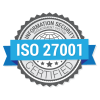Imagine this: your team has found itself over budget after a challenging year of technology migrations and changing suppliers.
You and your team need to find where the problems lie but no-one has enough spending analytics associated to your contract lifecycle management to fully understand the actual services being delivered within your technology and telecom supplier contracts in order to decipher the mess of documents and clearly articulate what your additional value and future cost reduction recommendation could be extracted from your suppliers.
You might have experienced this exact scenario yourself recently. It’s a common experience that has plenty of advice, from contract lifecycle management tips of how to find the most useful information through to hiring an outside cost optimization consultant to do the work for you.
The thing is, manual approaches to this problem are prone to human-error, and even for the perfect human investigator, there’s a high chance that not every issue is found.
Technology and telecom contracts cover a huge number of different services, which can be configured in different ways, and for every different configuration carries different contractual terms and pricing considerations.
We explore the challenges to accurately deciphering technology contracts against their invoices, and how category management analytic solutions can handle all of the contractual landscape for that category and simplify the process for your procurement teams.
The 5 Challenges for Deciphering Technology and Telecom Contracts, Invoices and SLAs
Getting the right kind of documents
- Detailed invoices aren’t straightforward
- Not all relevant contract documents (MSAs, Order Forms, Variations) are always centralized
Extracting the right information from documents
- Different formats, different data points, supplier-specific keys
- There is an industry dedicated to accurately extracting information from documents
Extracting info is not enough, they need to be modelled into a common spend analytics format
- One supplier calls it a “charge type”, another calls it an “activity”, another doesn’t call it anything but mixes it in with a plain-text product description
- How do you figure out these three things are one and the same?
Identifying the clauses and pricing tables from contracts that are relevant to a set of invoice charges
- If you’re an experienced contract analyst, you’d be able to do this for a few products. How would you scale this into an automated system?
Combining all this data to accurately identify cost reduction strategies with sufficient business justifications and proof-points
- There are hundreds of possible areas of cost savings that broadly fall into three categories (“Over-payment of services”, “Supplier billing mistakes”, “Supplier management”)
How to solve it with massive cost saving benefits for your business?
Until recently, tackling even the gathering and extracting of invoices came attached to expensive platforms with high set-up costs.
Now we are starting to see Machine Learning & AI introduce new solutions that bring down the cost of the components.
For example, there’s a rapidly growing industry for Intelligent Document Processing (see Rossum.ai or Parashift) that uses AI to intelligently learn from and extract data from your documents.
Yet looking at our 5 challenges shows us there’s many more flips and tricks we need to make to get to the right result.
Without running through the details of every challenge, this is a problem at the forefront of current Machine Learning / AI products for businesses.
We at TMS see the central challenge as being able to correctly uncover the common definitions behind raw text and find where those common definitions connect across contracts & invoices.
Using approaches like Named Entity Recognition and Text Classification, we can start to gradually peel back the layers of complexity – the complex-onion if you will.
Making Digital Procurement AI and Spend Analytics Automation work for your business
In business, there’s never one person who knows everything. Software development would be an easy walk in the park if there was.
Machines are only as smart as the information it gets to learn from. Context matters in business, and so it matters who gets to help feed the machine.
One trend of the next decade will be the rise of interactive Machine Teaching – where learning-based applications are weaved into AI products that can learn from many different people about a particular subject.
With the benefit of diverse experiences over business-specific data, it will become easier for AI products to achieve bigger and better outcomes.
Why Are Specific spend category Analytics important? Why not a generalist solution?
AI is getting better at a wider range of cool tricks. However, we are very far away from AGI – Artificial General Intelligence.
The number of context-shifts, incomplete or conflicting information found in one IT contract is a big enough challenge to work through. There doesn’t yet exist a way to skip over the amount of training required to make an AI product capable enough in one area.
Of course, there’s no need to stop at just one category. It just takes time, and in the coming years we will see a greater number of category-specific solutions arise until eventually a couple of market leaders will emerge with the broadest offering.
You may be wondering about the big players: Microsoft, Amazon, Google, IBM etc.
The cloud is a huge factor that enables category-specific intelligence solutions to be produced cost effectively. For the most part, you’ll find that each of these solutions will be implemented using one of these providers. Each of the big players attract companies to use and market their products through their marketplaces.
What are the positive financial impacts for improving contract lifecycle management (clm) as part of your digital transformation initiatives?
The outcomes from this breed of solution are powerful, as it can holistically capture issues while providing a digital foundation for improved operations.
Where customer’s find ROI:
* Reduced monthly invoices on a “go forward” basis. Can range from 7-25% of annual spend * Cost recovery from supplier billing mistakes. Can range from 3-15% of annual spend
* Better rates on next contract negotiations. 5-15% off total contract value
* Process automation for key reporting activities
Procurement is the process and when we look beyond simple cost savings measures, users benefit from having a permanent digital spend analytics tool that’s always available to provide “contract value intelligence” and an organized archive of their suppliers, services, and products -making deep knowledge and insight available to the non-technical user, and creating an environment for informed contract negotiations and supplier discussions.
Conclusion
Applying intelligent spending analytics to digital procurement and “complex contracts” is the next frontier of digital procurement transformation. Machine Learning & AI has found proof-points in other industries and specific solutions.
We at Thinking Machine are excited to be bringing this technology to digital procurement. Thinking Machine has created its initial product offering for Technology and Telecom services, promising businesses to never have to run an audit again.
Why not take an interactive tour of our spending analytics and cost optimization platform and start automating your technology and telecom cost reduction potential.


